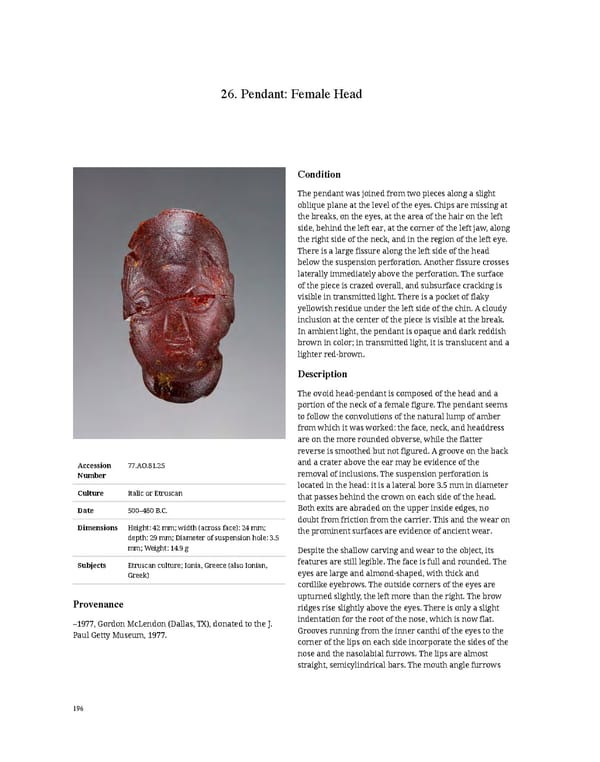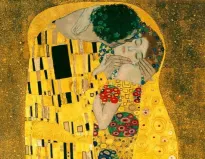26. Pendant: Female Head Condition The pendant was joined from two pieces along a slight oblique plane at the level of the eyes. Chips are missing at the breaks, on the eyes, at the area of the hair on the left side, behind the left ear, at the corner of the left jaw, along the right side of the neck, and in the region of the left eye. There is a large fissure along the left side of the head below the suspension perforation. Another fissure crosses laterally immediately above the perforation. The surface of the piece is crazed overall, and subsurface cracking is visible in transmitted light. There is a pocket of flaky yellowish residue under the left side of the chin. A cloudy inclusion at the center of the piece is visible at the break. In ambient light, the pendant is opaque and dark reddish brown in color; in transmitted light, it is translucent and a lighter red-brown. Description The ovoid head-pendant is composed of the head and a portion of the neck of a female figure. The pendant seems to follow the convolutions of the natural lump of amber from which it was worked: the face, neck, and headdress are on the more rounded obverse, while the flatter reverse is smoothed but not figured. A groove on the back Accession 77.AO.81.25 and a crater above the ear may be evidence of the Number removal of inclusions. The suspension perforation is located in the head: it is a lateral bore 3.5 mm in diameter Culture Italic or Etruscan that passes behind the crown on each side of the head. Date 500–480 B.C. Both exits are abraded on the upper inside edges, no doubt from friction from the carrier. This and the wear on Dimensions Height: 42 mm; width (across face): 24 mm; the prominent surfaces are evidence of ancient wear. depth: 29 mm; Diameter of suspension hole: 3.5 mm; Weight: 14.9 g Despite the shallow carving and wear to the object, its Subjects Etruscan culture; Ionia, Greece (also Ionian, features are still legible. The face is full and rounded. The Greek) eyes are large and almond-shaped, with thick and cordlike eyebrows. The outside corners of the eyes are Provenance upturned slightly, the left more than the right. The brow ridges rise slightly above the eyes. There is only a slight –1977, Gordon McLendon (Dallas, TX), donated to the J. indentation for the root of the nose, which is now flat. Paul Getty Museum, 1977. Grooves running from the inner canthi of the eyes to the corner of the lips on each side incorporate the sides of the nose and the nasolabial furrows. The lips are almost straight, semicylindrical bars. The mouth angle furrows 196
 Ancient Carved Ambers in the J. Paul Getty Museum Page 205 Page 207
Ancient Carved Ambers in the J. Paul Getty Museum Page 205 Page 207
